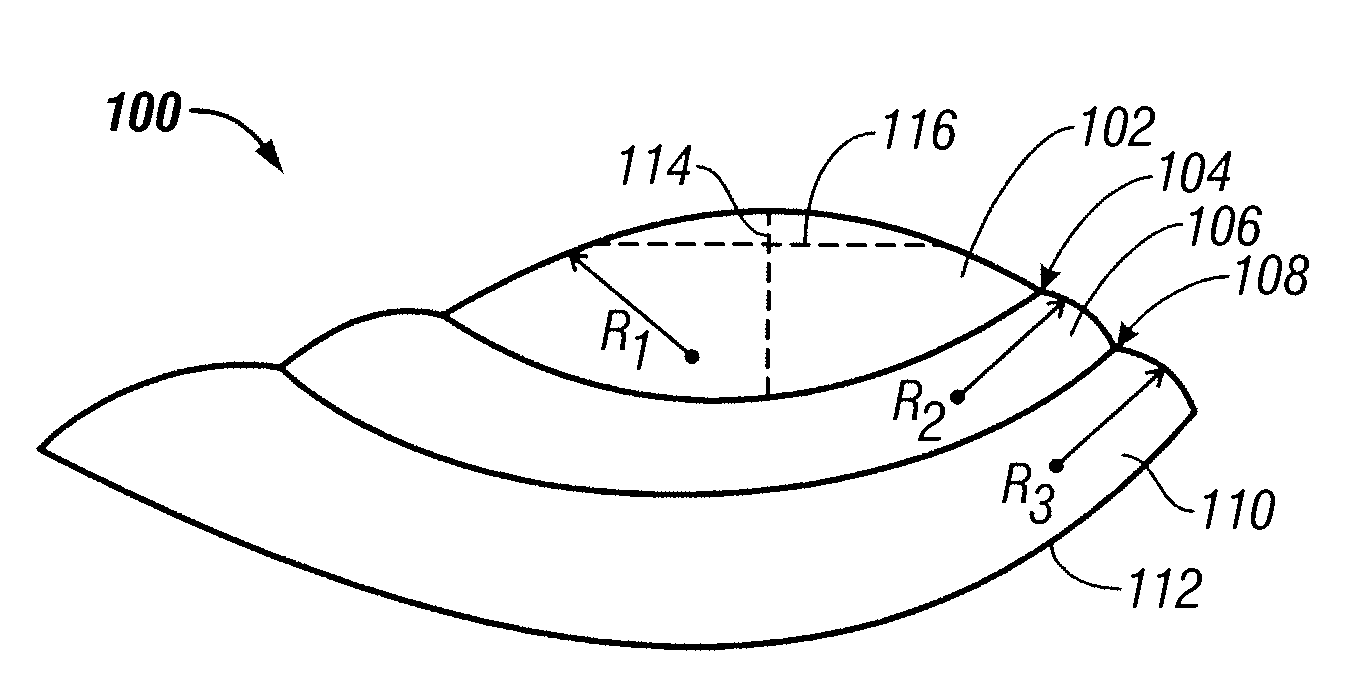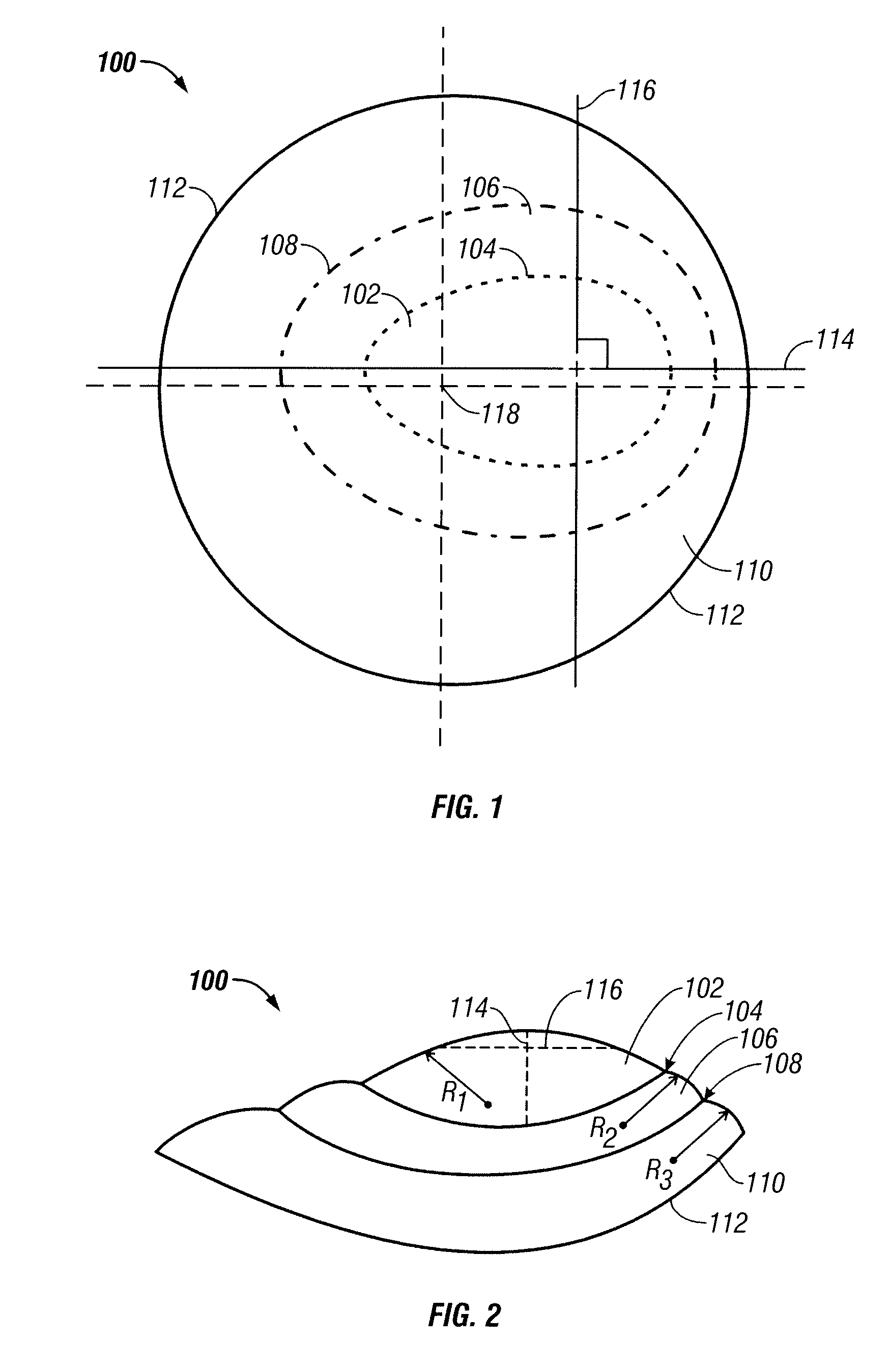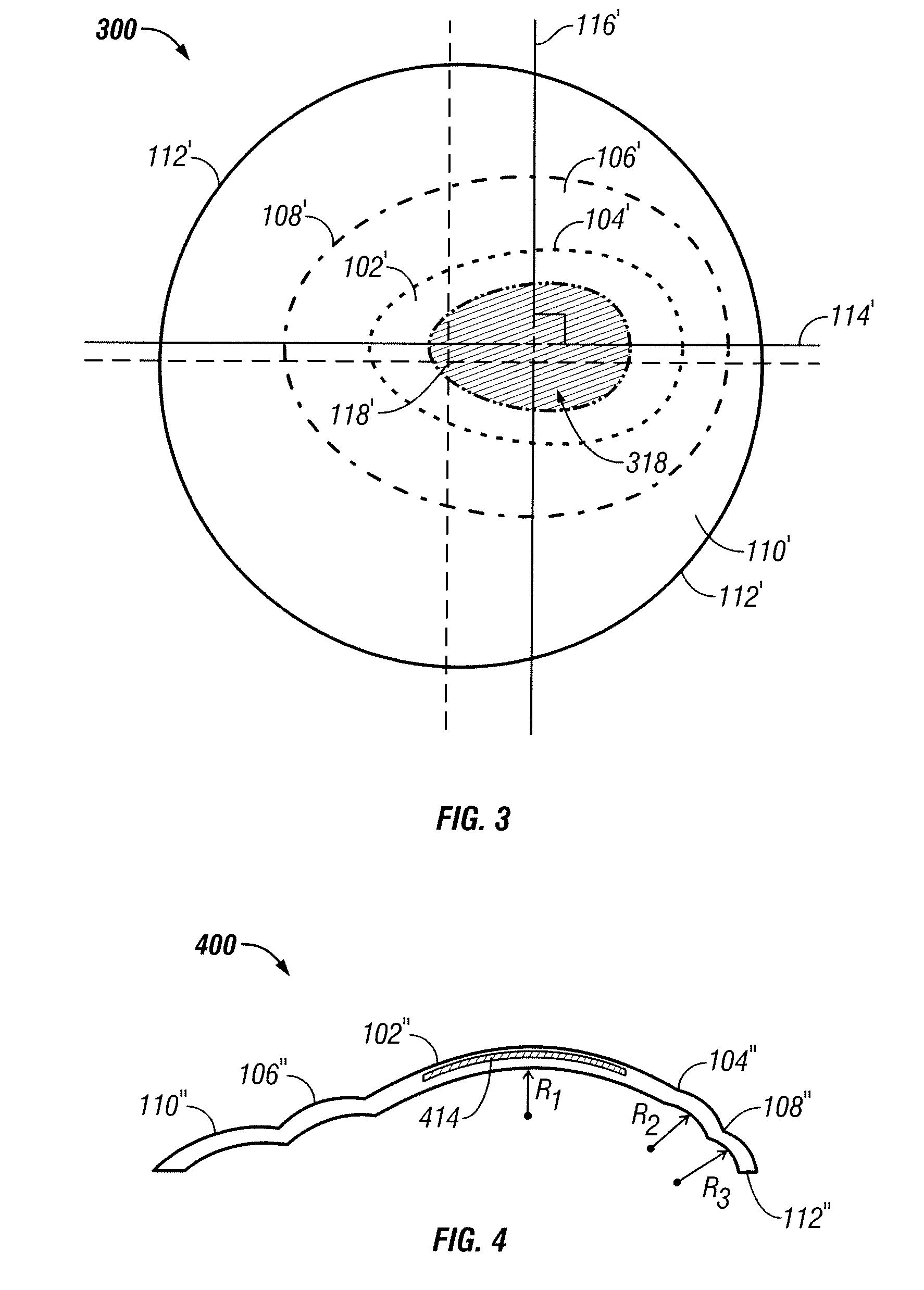Contact lens for keratoconus
a technology of contact lenses and keratoconus, which is applied in the field of contact lenses and ophthalmic methods, can solve the problems of corneal scarring, severe ectasia, and insufficient structure of the cornea to hold the dome shape, and achieve the effect of improving visual acuity and comfor
- Summary
- Abstract
- Description
- Claims
- Application Information
AI Technical Summary
Benefits of technology
Problems solved by technology
Method used
Image
Examples
Embodiment Construction
[0024]In the following paragraphs, the present invention will be described in detail by way of example with reference to the attached drawings. Throughout this description, the preferred embodiment and examples shown should be considered as exemplars, rather than as limitations on the present invention. As used herein, the “present invention” refers to any one of the embodiments of the invention described herein, and any equivalents. Furthermore, reference to various feature(s) of the “present invention” throughout this document does not mean that all claimed embodiments or methods must include the referenced feature(s).
[0025]As set forth hereinabove, prior art contact lenses for keratoconus used posterior designs that were geometrically centered on the contact lens. However, in the majority of cases of keratoconus, the apex of the cornea is not centered, rather, it is displaced from the center. Lenses conforming to the shape of the cornea are displaced in the direction of the apex ...
PUM
 Login to View More
Login to View More Abstract
Description
Claims
Application Information
 Login to View More
Login to View More - R&D
- Intellectual Property
- Life Sciences
- Materials
- Tech Scout
- Unparalleled Data Quality
- Higher Quality Content
- 60% Fewer Hallucinations
Browse by: Latest US Patents, China's latest patents, Technical Efficacy Thesaurus, Application Domain, Technology Topic, Popular Technical Reports.
© 2025 PatSnap. All rights reserved.Legal|Privacy policy|Modern Slavery Act Transparency Statement|Sitemap|About US| Contact US: help@patsnap.com



